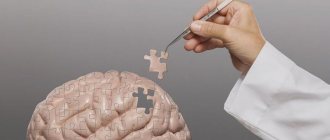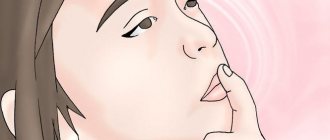Emotional dullness is associated with coldness, as well as the disappearance of ethical feelings. Such people do not empathize with family and friends and lose delicacy. Psychologists note indifference not only to the fate of others, affective impoverishment contributes to a decrease in the patient’s interest in his own life.
It is curious that a person loses higher emotions, while lower feelings remain at the same level. The need for nutrition, sleep and safety does not disappear. This condition is not a disease, but it accompanies many mental disorders.
Prognosis for children with Shereshevsky-Turner syndrome
The following problems can affect the length and quality of life of patients:
- congenital heart defects;
- spina bifida;
- developmental anomalies of the genitourinary system;
- damage to the thyroid gland;
- infertility;
- mental retardation;
- decreased hearing and visual acuity;
- malignant neoplasms of the skin;
- psychological problems.
Congenital heart defects
Cry of the cat syndrome The most common types of congenital heart and large vessel defects are:
- ventricular septal defect;
- atrial septal defect (patent foramen ovale);
- Fallot's triad;
- insufficiency or stenosis (narrowing) of the heart valves;
- narrowing or expansion of the aorta;
- pulmonary stenosis;
- disorders of the cardiac conduction system.
blood pressureheart attack and stroke
Anomalies of the development of the genitourinary system
The most common problems with the genitourinary system are:
- horseshoe kidney;
- duplication of the ureter;
- underdevelopment (hypoplasia) of the kidneys;
- disturbance of urine outflow.
pyelonephritis, kidney stones, renal colic
Causes
The emergence of emotional dullness appears as a process of disruption of the affective response to external event or social stimuli. This occurs due to disruption of brain processes associated with neural connections, impulse transmission, and the level of mental and intellectual processes. This affective change has no age-related characteristics, the only thing is that there is a specificity of provoking factors that is more suitable for different stages of development. These changes always indicate improper functioning of the psyche, and in adults they are associated with psychiatric diseases (depression, dementia, schizophrenia spectrum), and in childhood the causes are psychological (psychotrauma received, improper upbringing, negative psycho-emotional conditions in the family).
Separately, it is worth highlighting the organic causes of affective flattening against the background of brain damage - trauma, tumors, strokes. In children's versions, this includes various mental development delays, autism, and the consequences of pathological childbirth.
Social developmental factors can shape the lack of correct emotional response if they include deprivation of emotional examples. Most often, such disorders occur in orphans and children whose parents are completely immersed in work or solving their own problems. Without receiving the required number of examples, without going through moments of complication of reactions, thanks to the observation and explanation of adults, the child remains at the initial level of emotional development. For the formation of a full set of various subtle and complex reactions, he needs active interaction and support from adults, their explanation of what is happening to him and how it can be expressed.
If there is no one who can explain the experiences that are occurring, then they remain incomprehensible and frightening, closed from manifestation, and subsequently from implementation. Further development occurs without using the entire emotional spectrum, so after a few years the psyche stops experiencing these emotions, discarding them as an unnecessary function. This is how the defect grows even in the absence of medical or organic problems.
Causes of emotional dullness
Emotional dullness is a consequence of organic disorders in the brain. Doctors note that anxiety symptoms accompany thought disorders, delusions and other manifestations of schizophrenia at an early stage. The German psychiatrist E. Kretschmer wrote that patients experience the phenomenon of glass and wood.
The phenomenon is an inadequate response to an external stimulus. Thus, a person becomes “wooden” in relation to important events, and unimportant ones drive him crazy. The “glass fragility” of consciousness distinguishes people with schizophrenic disorder. Affective changes have no age-related characteristics.
Psychological defense in patients with schizophrenia is poorly developed, so the deficit of emotions is compensated by inadequate vulnerability. In psychiatry, this condition is called emotional flattening, when a person’s face becomes similar to a mask, and speech becomes monotonous.
The described condition is irreversible. But affective dullness also manifests itself in other mental disorders. For example, hysterical psychopathy inevitably leads to an impoverishment of feelings. Another reason for the development of painful indifference is depression. Patients also lose the need for activities that previously brought joy.
Emotional dullness is a consequence of the influence and social factors on the individual. The disorder is often observed in orphans who grew up outside the family, and it also affects children whose parents were immersed in work. The child does not see a role model, remaining at an early stage of emotional development.
For the full formation of complex reactions, a person needs interaction and support from society, as well as their explanation. After a few years, the psyche will discard unnecessary emotions even in the absence of illness.
Causes of paraproctitis
infectionsMicroorganisms that can cause paraproctitis
- Most often: staphylococci, streptococci, Escherichia coli, Proteus. With ordinary paraproctitis, a combination of different types of the listed microorganisms is usually found in the abscess.
- Anaerobic bacteria - living in oxygen-free conditions. The disease caused by these pathogens occurs in severe forms: putrefactive paraproctitis;
- gas phlegmon of the pelvis;
- anaerobic sepsis.
Routes of penetration of pathogens into peri-rectal tissue
- For inflammation of the rectal crypts and anal glands. Typically, the infection from the crypt enters the duct and then into the gland itself. The duct becomes blocked, causing the gland to turn into an abscess. As inflammation spreads deeper, paraproctitis develops.
- Infection from the rectum through the lymphatic vessels during proctitis.
- Injuries to the rectal mucosa. They can occur when a foreign body enters the intestine, the presence of sharp objects in the stool, during various medical procedures and interventions on the rectum.
- Injuries to the pelvis and anus. In this case, the infection enters the fatty tissue from the external environment.
- Spread of inflammation from neighboring organs: prostate gland (with prostatitis), urethra (with urethritis), female genital organs (with adnexitis, salpingoophoritis).
Factors predisposing to the development of paraproctitis
- weakened immunity;
- exhaustion, prolonged fasting;
- alcoholism;
- severe, frequent infections;
- chronic infections;
- damage to small vessels in diabetes mellitus;
- atherosclerosis;
- dysfunction of the intestines: diarrhea, constipation;
- haemorrhoids;
- anal fissures;
- chronic inflammatory process in the pelvic organs: prostatitis (inflammation of the prostate gland); cystitis (inflammation of the bladder); urethritis (inflammation of the urethra), salpingoophoritis (inflammation of the uterine appendages);
- nonspecific ulcerative colitis;
- Crohn's disease.
Flattening of affect in mental disorders[ | ]
“Emotional pallor” occurs in dementia with Pick’s disease (02.002.0)[1][9], “emotional coldness, aloof or flattened affectivity”
in schizoid personality disorder[1][9], flattening of affect can also act as a parkinsonian side effect of taking antipsychotics[9][10] (with the so-called “mental parkinsonism”, also known as neuroleptic deficiency syndrome[10]).
In depression, affect may be mistaken for flattened due to the slowing of psychomotor activity of those suffering from depression[5].
Sometimes flattened affect is one of the first manifestations of the onset of the schizophrenic process, especially in cases of a simple type of schizophrenia[11]. V. Mayer-Gross considered flattening of affect to be one of the primary symptoms of schizophrenia, in addition to thinking disorders, delusions of attitude, sound of thoughts, passivity with a feeling of influence and catatonic behavior [12].
Neuralgia - causes, treatment
Neurotic otalgia appears as a result of neuritis of the trigeminal, glossopharyngeal and vagus nerves. The cause of neuralgia can be infectious agents - bacteria and viruses, pinched nerves in the bone canal, hypothermia and other factors.
Clinical manifestations
Neurological pain is characterized by paroxysmal character. Ear pain is accompanied by pain in the area of the root of the tongue, soft palate, and face. Symptoms of otalgia depend on the damage to one or another nerve. Exacerbations occur more often in the cold season. Symptoms will increase and the condition will worsen. At first, isolated attacks appear, and then the pain in the ear intensifies. The clinical picture depends on the affected nerve. The trigeminal nerve is most often affected. The treatment is carried out by a neurologist.
Treatment of neuralgia
In the complex treatment of neurogenic otalgia, B vitamins are used, primarily B1, B6, B12. They improve conductivity, restore damaged cell elements, and improve metabolic processes. The drug Milgamma has proven itself to be excellent. This is a complex vitamin preparation with lidocaine for an analgesic effect. Symptomatic treatment is used - painkillers, drugs for seizures. In severe cases, hormones and antidepressants. It is possible to use acupuncture and vibration massage.
Kinds
Based on the types of injuries received, the classification of abdominal injuries implies:
- with open abdominal injuries, injuries are divided into non-penetrating and penetrating abdominal wounds;
- closed abdominal injuries can occur with or without damage to internal organs.
In situations with open wounds, damage to the human skin is observed. A penetrating injury to the abdominal cavity can lead to prolapse of the omentum or parts of the intestine into the wound. The intestines or omentum may become stuck between the muscles or come out completely. With non-penetrating trauma, the peritoneal walls remain intact, but damage to muscle tissue is more often present.
With closed abdominal injuries, the victim's skin remains intact. This may include bruises and bruises of the abdominal wall, ruptures of muscle tissue and fascia, damage to organs located in the abdomen and beyond. With a closed type of injury, there is a large number of ruptures of parenchymal and hollow organs - intestines, liver, kidneys, pancreas. Splenic rupture is common with blunt abdominal trauma. Injuries to the kidney occur a little less frequently than to other organs, since the location of the kidneys in the retroperitoneal space is more protected, because they are surrounded on different sides by other organs and tissues.
Based on the prevalence of injuries and the number of injured organs, abdominal injuries are divided into the following types:
- Isolated injuries - the integrity of any one organ is compromised;
- Multiple - two or more organs are damaged at once;
- Combined - this includes injuries that occur in different parts of the body, for example, damage to the abdominal cavity simultaneously with a fracture of a limb.
Degrees of emotional disturbance[ | ]
Western division of degrees of disturbance in the affective sphere:
- Blunted affect - expression of emotions is present, but significantly weakened compared to the norm[7].
- Flat affect is an extreme degree of dulling of affect, the expression of emotions is practically or completely absent: minimal facial expressions, lack of gestures and a monotonous voice[7][8].
According to the American classification of mental disorders DSM-5, a mild decrease in affect is restricted/constricted affect
, significant -
blunted affect
, complete -
flat affect
.
What is emotional dullness and why does it occur?
Emotions are a mental state that arises in response to events in the world around us, the thoughts and actions of people around us, and our own. Negative and positive emotions are necessary for a person not only to interact with the environment, but also to motivate action and development.
Emotions can be primary and secondary. Primary emotions are those that arise in response to external irritation: joy, fear, sadness, surprise, and so on. Secondary ones are more complex, appearing after “processing” of primary emotions in the brain. For example, fear can turn into aggression, joy into pride, surprise into admiration, and so on.
Also, types of emotional experiences are divided into simple or “lower” and complex or “higher”. Simple emotions are the body’s response to various stimuli, both positive and negative. So a taste, a smell, a sight can cause pleasure or disgust, any event in the surrounding world can be an unpleasant or pleasant experience.
Complex emotions: empathy, shame, suffering, disgust, require quite a lot of work from a person’s consciousness and arise only as he becomes aware of the norms and rules of the surrounding society, in the process of education or observation of people around him. It is with the lack or absence of emotions from this group that the concept of “emotional deafness” or stupidity is associated.
Emotional dullness or disturbances in the emotional-volitional sphere usually arise due to a disruption in the connection between ongoing events and the emotions that arise in response in the patient’s brain. Moreover, as a rule, only complex connections responsible for “higher” functions are disrupted.
Emotional dullness or emotional rigidity can occur at any age. Unexpected emotional and volitional disturbances may indicate serious mental problems or the development of diseases such as schizophrenia, depression, psychopathy or dementia. In a child, this syndrome may occur in response to improper upbringing, negative parental attitudes, or trauma. In such children, in the future, disturbances of emotional and volitional processes may also be identified, even with complete mental health.
Reasons for the development of emotional dullness
Emotional deafness can develop due to organic, physiological or psychological reasons.
In adults, disorders of the emotional-volitional sphere usually develop due to organic brain damage as a result of injury, infectious disease, stroke or other brain disease. Sometimes symptoms of emotional dullness indicate the onset of another mental illness: schizophrenia, depression or psychosis.
Emotional disorders in children can be caused by mental trauma, mental retardation, mental illness (autism, schizophrenia) or parental deprivation of the child, as well as difficult social and living conditions. In other words, if a child does not receive enough examples of the “correct” emotions at a certain age, he may not develop them in the future. Thus, emotional deafness is often found in children from orphanages whose parents did not care for them in childhood or who spent their early childhood in asocial conditions.
Symptoms
Signs of emotional dullness appear as the mental disorder intensifies. Reactions that imply a negative message are realized through bright outbursts of anger. Such experiences are often repressed, and after an attack the patient does not remember screaming or fighting with someone.
Positive emotions - getting what you want or pleasure - are experienced through a state of euphoria. The holistic perception of the situation is disrupted and replaced by affective euphoria. A person is unaware of the needs of those around him, he is only interested in his own benefit, as well as motives that are unusual for healthy people. In severe cases, the patient is not able to come to the aid of others, but he will easily commit a crime if there is a benefit in doing so.
In schizophrenia, emotional dullness has characteristic symptoms:
- the same facial expression;
- slow movements;
- dull voice.
This condition also occurs with depression. In less severe cases, indifference disrupts the social life of an individual, since he does not comply with moral and ethical standards and acts selfishly towards relatives. Patients do not realize the error of their behavior, but if they understand the criticism, such people are able to pretend and act “correctly”. But there is still no awareness of the meaning of actions.
Symptoms of emotional dullness in children can vary. Some children try to conform to generally accepted norms without understanding their meaning. Teenagers often defend their opinions, despite criticism from others and conflicts.
The famous psychiatrist W. Reich believed that feeling is a direct expression of a person’s mental energy. Describing the symptoms of affective dullness, he focused on the fact that in a problematic personality the energy is inhibited in the center of the body. The theory of chronic muscle tension was supported by the authors of domestic textbooks on psychiatry.
The patient may understand the inadequacy of his actions, notice the reaction of society, but without correction tools, the painful condition will only progress. Affective flattening inevitably leads to consequences such as suicide attempts due to rejection of what is happening. The emotional background becomes poorer, questions about feelings and mood are ignored by the person.
Etiology
The causes of the pathology are the following:
- Diseases of internal organs - heart, kidneys, liver.
- Allergic reactions - Quincke's edema.
- Endocrinopathies - myxedema, Cushingoid.
- Vascular disorders – disturbances of venous outflow and lymph flow with varicose veins and lymphadenitis.
- Long-term use of certain medications - hormonal drugs, NSAIDs, antihypertensive drugs.
- Pregnancy.
- Cachexia.
- Severe intoxication.
- Paresis, paralysis, hemiplegia.
- Traumatic injuries.
Factors that contribute to fluid retention in the body include: hyperthermia, fatigue, hormonal imbalance, and excessive salt intake.
Consequences of nephrotic syndrome
Metabolic changes in nephrotic syndrome can lead to the development of the following complications:
- infectious process;
- hyperlipidemia and atherosclerosis;
- hypocalcemia;
- hypercoagulability;
- hypovolemia.
Infectious process
streptococcus e.g. proteinase, glycoprotein The following factors may contribute to an increase in the risk of developing an infectious process:
- loss of immunoglobulin in the urine;
- widespread swelling, which is a favorable environment for the development of infection;
- protein deficiency;
- reduced antibactericidal activity of leukocytes;
- use in the treatment of immunosuppressive therapy syndrome.
Hypovolemia
The main signs of hypovolemia are:
- vomit;
- abdominal pain;
- diarrhea;
- cold hands and feet;
- oliguria;
- tachycardia;
- hypotension.
Also, nephrotic syndrome can lead to the development in a patient of:
- hypertension (due to fluid retention in the body and decreased renal function);
- chronic edema (cavitary edema and anasarca may develop);
- anorexia (due to the development of ascites, the patient may experience loss of appetite);
- iron deficiency anemia (due to a decrease in the level of transferrin protein, which transports iron).
Prevention of nephrotic syndrome includes:
Notes[ | ]
- ↑ 1 2 3 4 5 6 7 World Health Organization.
The ICD-10 Classification of Mental and Behavioral Disorders. Clinical descriptions and diagnostic guidelines. — Geneva. — 267 p. (English) - ↑ 1 2 3 World Health Organization.
International Classification of Diseases (10th revision). Class V: Mental and behavioral disorders (F00-F99) (adapted for use in the Russian Federation). - Rostov-on-Don: “Phoenix”, 1999. - ISBN 5-86727-005-8. - ↑ 1 2 Nosachev G. N., Baranov V. S.
5.5.2. Negative emotional disorders // Semiotics of mental illness (general psychopathology). - Forum, Infra-M, 2015. - ISBN 978-5-00091-086-3. — ISBN 978-5-16-011041-7. — ISBN 978-5-16-103106-3. - A. Morrison, J. Renton, H. Dunn.
Cognitive Therapy for Psychosis: A Formulation-Based Approach. - Routledge, 2004. - P. 196. - ISBN 1-135-44780-2. (English)< - ↑ 1 2 David P. Moore, Basant K. Puri.
Textbook of Clinical Neuropsychiatry and Behavioral Neuroscience 3E (English). - CRC Press, 2012. - P. 187. - ISBN 978-1-4441-6494-7. (English) - Glossary of symptoms for mental disorders: Glossary of symptoms used to define mental and behavioral disorders in ICD-10 = ICD-10 Symptom Glossary for Mental Disorders / Prep. M. Isaac, A. Janga, N. Sartorius. - St. Petersburg: “Overlayd”, 1994. - P. 34. - 47 p.
- ↑ 1 2 Paula T. Trzepacz, Robert W. Baker.
The Psychiatric Mental Status Examination (English). - Oxford University Press, 1993. - P. 49-52. — ISBN 978-0-19-802280-0. (English) - Hoyle Leigh.
The Patient: Biological, Psychological, and Social Dimensions of Medical Practice. - Springer Science & Business Media, 2013. - P. 151. - ISBN 978-1-4684-4955-6. (English) - ↑ 1 2 3 Yu. V. Popov, V. D. Vid.
Modern clinical psychiatry. - M.: “Expert Bureau-M”, 1997. - P. 23, 98, 284. - 496 p. — ISBN 5-86065-32-9 (erroneous). - ↑ 1 2 Avedisova A. S.
New opportunities for improving cognitive functions and social adaptation in the treatment of schizophrenia // Farmateka. - 2004. - No. 9/10 (87). - ↑ 1 2 N. E. Bacherikov, K. V. Mikhailova, V. L. Gavenko, S. L. Rak, G. A. Samardakova, P. T. Zgonnikov, A. N. Bacherikov, G. L. Voronkov .
Pathology of emotions // Clinical psychiatry / Ed. Bacherikova N. E.. - Health, 1989. - P. 80. - ISBN 5-31100-334-0. - Samokhvalov V.P.
Schizophrenia, schizotypal and delusional disorders (F2) // Psychiatry (Textbook for students of medical universities). - Rostov-on-Don: Phoenix, 2002. - P. 155. - 575 p. — (Series “Higher Education”). — ISBN 5-222-02133-5. - Stoimenova J. A., Stoimenova M. Y., Koeva P. Y. et al.
Psychiatric encyclopedic dictionary. - K.: "MAUP", 2003. - P. -97. — 1200 s. — ISBN 966-608-306-X. - Kretschmer E.
Body structure and character = Körperbau und Charakter. Untersuchungen zum Konstitutionsproblem und zur Lehre von den Temperamenten / Ed. Gannushkina P. B.; translation from 2nd German. ed. G. Ya. Tartakovsky. - Moscow - Petrograd: State Publishing House, 1924. - P. 190. - 283 p. — 5000 copies. (Russian)
User Questions (6)
- Ekaterina 2018-01-23 16:31:45
Pain in the left ear for more than three months, the ENT specialist sent it to a neurologist, the doctor said that problems with blood vessels (cervical osteochondrosis) prescribed cerabralysin, mildronate, tanakan, after treatment there was no pain... - Lyudmila Grigorievna 2016-12-17 12:31:35
Hello. I have been having shooting pains in my right ear for a long time. with impact to the temple (as if the temple is inflating). Yesterday I went to the ENT doctor. The ears are fine. Put… - Tamara 2016-10-03 01:53:08
My left ear has been hurting for more than 2 months, I instilled Otipax, 1 month ago I saw a paid doctor (I paid 750 rubles in 5 minutes) I am a pensioner, they diagnosed “otalgia”, sent me for a consultation to... - Vyacheslav 2016-09-15 22:34:20
Hello. Three weeks ago, a dull pain began behind the ear and in the area of the tragus, especially when pressing on it. I visited an ENT specialist and had a preliminary diagnosis of otitis media. not confirmed. Was sent to... - Narizhat 2016-05-01 09:40:02
Hello. About a month of pain in the ear, aching, paroxysmal, sometimes worse at night, then subsides or intensifies. I visited an ENT specialist. Diagnosis: otalgia, and chronic tonsillitis. Treatment did not bring results. The pain began... - Olga 2015-06-28 20:34:35
Good afternoon I am worried about shooting paroxysmal pain in my left ear. Two weeks. Two days before the onset of the attack, there was itching in both ears, then pain began in the left one, sometimes there is a slight pain in the right one...
Diagnostics
The sequence of actions when diagnosing the causes of pain depends on its location, nature and accompanying symptoms
For pain of unknown localization, priority is given to instrumental methods - ultrasound, radiography, MRI, CT, ECG, gastroduodenoscopy, etc. A list of tests and analyzes is prescribed by a traumatologist, therapist, surgeon or other specialist
To assess the intensity of pain, 2 grading systems are used - simplified and extended.
The simplified “tolerance scale” includes 3 stages:
- mild pain – does not interfere with movement and daily activities;
- severe pain - disrupts the normal rhythm of life, does not allow you to perform normal activities;
- unbearable pain - it confuses consciousness and can provoke fainting and shock.
Extended gradation involves the use of a visual scale of subjective assessment - from 0 to 10, where “ten” means severe pain shock. During the examination, the patient is asked to assess the intensity of the pain himself, so the result may not correspond to reality.
Attention! The intensity of pain does not always indicate the severity of the pathological process, so “saying goodbye to life” with severe pain, as well as underestimating mild pain, should not be done. Only after establishing the cause of the pain, its intensity and nature, will the doctor prescribe suitable painkillers
This is due to differences in the mechanism of action in different groups of analgesics - what is suitable for nociceptive syndrome is completely ineffective for neuropathic
Only after establishing the cause of the pain, its intensity and nature, will the doctor prescribe suitable painkillers. This is due to differences in the mechanism of action in different groups of analgesics - what is suitable for nociceptive syndrome is completely ineffective for neuropathic syndrome.
What does the symptom mean?
If a person feels pain during this action, then the result of determining the Wasserman-Matskevich symptom can be considered positive. This allows us to suspect the development of any of the following pathologies:
- Radiculitis in the sacral area. This is a disease in which the spinal cord is damaged, as well as damage to the femoral nerve.
- The Wasserman symptom is especially noticeable in the presence of a hernia in the lumbar region.
- Myositis. In this condition, there is an increase in muscle tone and muscle contraction.
- Ankylosing spondylitis is a pathology in which the spine is damaged.
- In addition, the symptom of tension can develop in a pathological condition such as a hernia in the area of intervertebral discs.
- The presence of a tumor in the sacral area.
- Damage to joint tissue.
- The presence of inflammation or deformation in the muscle skeleton.
Clinical picture
Emotional stupidity towards people goes unnoticed for a long time. Only extreme forms of violations are easily diagnosed, when a person commits a crime or behaves inappropriately
While in euphoria, the patient attracts attention with his ridiculous appearance, loud laughter, and disregard for social norms.
A change in the brain allows you to step away from internal restrictions. Values and personal feelings change under the influence of impoverished feelings. A typical picture of affective dullness includes a lack of desire to give gifts to loved ones or, on the contrary, to harm enemies. The patient does not divide society into “friends” and “foes.”
In psychology, the impoverishment of emotions is most often observed in women, and it is also characteristic of men, whose mentality resembles that of a woman. Unfortunately, all attempts to change the mental state of patients fail, since the feeling of compassion and other emotions cannot be formed in adulthood.
In the inner world of an individual, a real “fight of feelings” occurs, so the experiences of others are unimportant for him. Busy with his own problems, a person does not react to what is happening.
Definition of the concept
People are emotional by nature. They react to what is happening around them, assessing events. There is always a response, and the reaction can be violent or restrained. In psychology, emotional dullness is a special state of the individual’s psyche, which is expressed by the loss of higher emotions.
Loss of gratitude, tolerance, compassion and shame is a sign of the following diseases:
- schizophrenia;
- dementia;
- damage to the cerebral cortex.
Experts consider this state of the emotional sphere as “moral idiocy.” The second name for this feature is affective dullness.
Emotional dullness in schizophrenia develops rapidly, leading to irreparable changes in the personal sphere. A person often develops vulnerability in areas that are tolerated by normal people without problems. A striking example is the patient’s lack of worries about the death of a relative and an outburst of anger due to the fact that someone used his dishes. Affective dullness makes an individual unpredictable.
The danger of this feature is that a person becomes more alienated every year. But one should not confuse a dangerous state with ordinary coldness, which is a defensive reaction of the individual. Anxiety grows when the patient pushes away people who were once close and dear to him.
Causes of genetic pathology
DNA set of genes enzymes All chromosomes can be divided into two types:
- Autosomes. Autosomes are the first 22 pairs of chromosomes. They encode most of the genetic information. Each of the autosomes contains genes without which the body simply cannot survive. That is why the absence of any of the 44 autosomes inevitably leads to fetal death in the prenatal period.
- Sex chromosomes. Sex chromosomes, unlike autosomes, are not always similar, although they are also conventionally combined into the 23rd pair. These chromosomes come in two types, which are conventionally designated X (female chromosome) and Y (male chromosome). These DNA molecules differ greatly from each other both in size and in the genes that are located on them. The Y chromosome is the smallest in the genome and contains only 429 genes (of which only 76 encode specific protein molecules). The presence of this chromosome in the genome is not necessary. It determines the development of the body according to the male type. If it is not there, development follows the female type.
pregnancyThe following genetic variants of this disease exist:
- Complete absence of the second sex chromosome. This variant of the syndrome occurs most often (in approximately 60% of cases). The single X chromosome is of maternal origin in almost 80% of cases. Since the second (paternal) chromosome is missing, female-type development is incomplete. Until the 3rd month of pregnancy, the ovaries of the embryo develop normally. However, then there is a gradual replacement of normal follicles (cells from which eggs will form in the future) with connective tissue. In addition, a number of malformations of other organs and tissues are observed. The complete absence of the second sex chromosome is considered the most severe variant of the syndrome. With it, the main signs and symptoms are most common.
- Mosaic option. The mosaic option is considered easier. With it, only a part of the body's cells contain one X chromosome. In other cells there are two sex chromosomes, and the second can be either X or Y. Sometimes there are patients with a third type of cell, containing three X chromosomes. The mechanism for the formation of such a mosaic is quite simple. After conception, embryonic cells begin to actively divide. At the same time, the genetic material is also divided between daughter cells. If at some point this separation does not occur, then some of the cells in the future will have an abnormal set of sex chromosomes. With the mosaic variant, the prognosis for girls is better. Severe malformations at birth are usually absent, and during puberty, problems with the menstrual cycle are not so pronounced. As a rule, the phenotype (appearance) characteristic of Shereshevsky-Turner syndrome is still present, but the number of visible signs of this disease is less than with complete monosomy X.
- Structural changes of the X chromosome. In rare cases, Shereshevsky-Turner syndrome is diagnosed in women who actually have two X chromosomes. One of these chromosomes is severely damaged (for example, most of it is missing). In this case, symptoms and signs characteristic of this disease appear, but they will be less than with the full form.
for women - 46, XX The likelihood of having a child with Shereshevsky-Turner syndrome can be affected by:
- some genital infections suffered by a woman in the past;
- chemical factors (environmental pollution, complex chemical compounds);
- physical factors (strong electromagnetic and ionizing radiation);
- genetic predisposition;
- starvation or exhaustion of the body as a result of serious illness (mainly in the period before conception).
gametes
Examples from life
In psychiatry, emotional dullness is observed when talking with such patients. In a state of remission, patients are able to talk about their peculiarities. A patient at one of the clinics admitted to doctors that the emotions she was holding back were a strong cry that could hit everything around her.
When the doctors asked how the ward could restrain such feelings, she declared her will. Another woman with schizophrenia said that suppressed emotions would inevitably cause an earthquake on the planet. When there is no time for analysis, a person stops contacting reality, thereby destroying his personality.
Emotional dullness is also observed when a person is exposed to destructive factors at an early age. The reason for this condition is always emotional. There is a known case where impoverishment of feelings developed in a woman who was spoiled by her parents from birth and got everything she wanted.
Until the age of five, she was the center of attention of her relatives, but after the appearance of her younger brother, the patient’s psyche was destroyed. The girl was filled with hatred, but the child was unable to express her feelings for fear of losing her parents. Emotions were locked inside the woman for many years.
Signs of BPD in adults
Psychologists have now identified 7 signs that a person has borderline personality disorder.
Identity defect
This sign can be called the main one. It is he who creates most of the problems.
At some point the patient realizes that he does not have his own:
- Emotions.
- Habits.
- Desires.
In borderline disorder, a person's lack of self-understanding leads to a distorted self-perception. In some difficult moments of life, when the patient is experiencing severe stress, there may be a feeling that this is not his own life and everything that happens in it is just a movie that cannot be influenced in any way. This unpleasant feeling provokes other symptoms.
Unstable relationship with partner
Even if a person with the disorder suffers from the pain caused to him by other people, he will still look for a new relationship, since every second of loneliness for people with this syndrome is pain.
And to avoid it, they can spend many hours in dating bars, restaurants and similar establishments, eager to meet new people and go anywhere.
The main thing for them is not to be alone.
A patient with the disorder is constantly searching for his loved one. And when she finds him, she tries to spend every minute of her life with him.
But if the patient spends too much time with him, it can cause great inconvenience to the person with the disorder.
But if, on the contrary, you leave it for a short period of time, the patient will feel unbearably lonely. Whatever option the partner chooses, he will still receive a strong reaction.
To compensate for this, the patient’s mood constantly changes: from joy to causeless anger. Not everyone can tolerate this, which is why relationships with a person with BPD almost never last long.
Fear of loneliness
When people with BPD are left alone, they are overcome by feelings of emptiness, boredom and panic. Therefore, they can cling to any person just so as not to be left alone.
To prevent their loved ones from leaving them, they can skillfully manipulate them or even use force. And if they still lose control over their loved ones, then thoughts of suicide come to their minds.
Chronic feeling of emptiness or boredom
In patients with the disorder, the emptiness in the soul is like a black hole.
Since they cannot have their own emotions, BPD patients replace them with:
- Casual acquaintances.
- Adrenaline.
- Physical pain.
Patients often complain of pain in the abdomen, chest and heart. Some people with the disorder say their soul hurts.
Impulsive, self-destructive behavior
People with borderline personality disorder cannot stand their own experiences. And to cope with this they harm themselves.
This can be not only physical damage, but also:
- Tattoos with the style of death and evil.
- Alcoholism.
- Unprotected sex.
- Masochism in relationships.
- Binge eating.
- Risky driving
According to statistics, 80% of people who get tattoos have borderline disorder. Moreover, most patients are never satisfied with their tattoos. But still, in 60% of cases they come back again to get another drawing.
Inability to control one's actions
Due to all these symptoms, patients become moody. Euphoria may give way to intense anger, aggression, or paranoia for no apparent reason.
Mood problems are caused by:
- Fights.
- Offenses.
- Attacks on animals and people.
Mood swings
It is quite common for patients to wake up in a terrible mood, but jump for joy at lunch, and in the evening stare blankly at one point without even wanting to move. It is very exhausting, both physically and mentally.
Borderline personality disorders constantly cause sufferers to experience hellish torment in their souls. Diagnosing borderline disorders is very difficult due to the similarity of symptoms with other psychological problems. Therefore, the search for methods of proper therapy often drags on for years.
The meaning of psychotherapy
In people with impoverished emotions, dreams also disappear. The absence of imaginary actions in a dream leads to internal devastation. Loss of senses does not affect life expectancy in any way, but sharply reduces its quality. Experts recommend using the following techniques:
- Gestalt therapy;
- art therapy;
- suggestion.
You need to be patient during the treatment process. When the patient becomes interested in creativity, we can talk about success, since it is closely related to the manifestation of emotions. It is advisable to motivate the individual to create something colorful and unusual: paintings, crafts, works on paper.
The goal of psychotherapy for the patient is to learn to express emotions. Then work is carried out with comprehension and recognition of feelings. The mentee must describe them, expand his own vocabulary and study materials, as well as monitor the reactions of other people. Additionally, the patient receives medications that suppress physiological problems.
Emotional dullness is not only a condition when the patient is afraid of change. He feels the emptiness inside himself and strives to fill it with anything. The result of treatment depends on the desire of the person himself to change his quality of life for the better.
In Gestalt therapy, a person is a holistic image, the integral parts of which are body, soul and spirit. With the help of such a technique, a person will be able to experience feelings, as well as apply them to the experience gained. As a result of the experience, the patient completes the situation in the sense that it acquires clear features.
Psychology teaches us to experience “liberated” feelings without compromising the patient’s mental health. Success can be judged when the student begins to associate events with emotions rather than with details. At the same time, the patient’s imagination develops, he describes what is happening in colors.
Diagnostic features
Diagnosis of Tourette's syndrome consists of a set of measures:
- interviewing the patient, visual examination;
- performing a CT scan of the brain;
- performing an MRI. The choice of a specific research method is made by the doctor.
Psychiatrists deal with a problem of this nature, and the syndrome itself is classified as a psychiatric disease according to ICD-10.
Important! Parents will not be able to determine for themselves which syndrome their child has. The fact is that there are very dangerous conditions that are disguised as tics, so visually they look the same as Tourette's syndrome
But only a professional can verify this. If during the examination a specialist suspects a deviation, he may prescribe a number of additional examinations and tests (as appropriate). In this case, you must go through all the procedures and make sure the diagnosis is accurate.
Treatment
Emotional depletion therapy begins with a clinical conversation between the psychiatrist and the patient. The doctor analyzes the mental state of the patient based on behavior, verbal and non-verbal signs. Often in a specialist’s office such people behave anxiously, speak quietly and indistinctly, and turn away from the doctor’s gaze.
Less common is a manic state when the patient shows a different attitude to the problem. He grabs documents with his hands, laughs, constantly gets distracted and changes the topic of conversation. In both cases, it is necessary to study the functioning of the central nervous system, as well as the brain. Treatment depends on the diagnosis and duration of the disease.
In childhood, emotional dullness is easier to treat. Thanks to medication and correction by teachers and psychologists, it is possible to level out a person’s condition. In rare cases, when there are no organic brain lesions, the problem can be corrected with the help of psychotherapy.
All family members must participate in the process, since it was the model of relations between relatives that influenced the appearance of this feature. Adult patients are examined by a neurologist, and during treatment the level of development of thought processes is checked. If the changes are caused by a brain tumor, then the first step of treatment will be its removal.
If a person does not have other mental disorders, he is prescribed the following medications:
- antidepressants;
- neuroleptics;
- sedatives.
In severe cases, the patient is hospitalized in a psychiatric hospital for treatment under the supervision of specialists. Medicines regulate the emotional background, have a positive effect on the functioning of brain neurons and the production of hormones. Each drug is selected individually, taking into account the characteristics of the patient.
Possible reasons
Dull pain can have different localization depending on the pathology that caused it.
The causes of dull pain in various areas can be the following diseases:
- Pain in the head may be a sign of fatigue, heatstroke or sunstroke. In addition, such pain syndrome often occurs when blood pressure increases;
- chest pain may be a sign of heart pathologies or pneumonia;
- back pain may be associated with muscle strain, the development of osteochondrosis or chronic pyelonephritis;
- abdominal pain indicates chronic cholecystitis, hepatitis or pancreatitis;
- pain in the lower abdomen can be a symptom of chronic cystitis or inflammation of the appendages in women.
Therapeutic measures
Compliance with an adequate general therapeutic regimen is the basic rule in the treatment of pathology. Massive edema of any etiology requires hospitalization of the patient in a hospital and bed rest.
The second, no less important, rule is maintaining proper nutrition. Patients are advised to reduce the amount of liquid they drink per day and sharply limit their intake of salty foods. Salt can be replaced with herbs and spices so that the food does not seem so bland. The diet should consist of easily digestible and low-calorie foods, which should be consumed in small portions 5-6 times a day.
Drug treatment is aimed at dehydration and consists of prescribing diuretics. There are several types of diuretics belonging to different pharmacological groups:
- loop diuretics - Bufenox, Lasix, Diuver,
- potassium-sparing diuretics - “Veroshpiron”, “Spironolactone”,
- thiazides that have a long-term effect - “Hypothiazide”, “Polythiazide”,
- non-thiazide diuretics – “Indapamide”, “Arifon”,
- combined diuretics – “Apo-Triazide”,
- osmotic and mercury diuretics are being replaced from use by modern drugs.
There is a mechanical way to eliminate swelling: the legs or other swollen area are bandaged with an elastic bandage.
Physiotherapeutic methods are widely used in the complex treatment of the syndrome. Patients are prescribed laser therapy, magnetic therapy, and ultraviolet irradiation of the blood. These procedures promote fluid outflow and have no contraindications or side effects.
Traditional methods of treating edema:
- Cryomassage - rubbing a swollen face with an ice cube made from green tea, chamomile or sage infusion.
- An infusion of birch leaves is used to moisten cotton pads and apply them to swollen eyelids.
- Soak napkins in potato juice and apply a compress to the swollen area.
- A mask of parsley and sour cream is applied to the face for half an hour.
To prevent edema syndrome, it is necessary to follow medical recommendations: limit salt intake; promptly treat diseases of internal organs that can cause swelling; drink a moderate amount of liquid per day; include natural diuretic products in your diet - tea with lemon, rosehip decoction, lingonberries, cranberries.
Edema syndrome is a serious problem resulting from severe internal dysfunctions. When the first signs of pathology appear, you should consult a doctor to quickly and without consequences solve the problem. If treatment is not carried out in a timely manner, the swelling will increase and become painful, the affected tissues will become infected, their trophism and innervation will be disrupted, muscles and ligaments will become rigid, and the walls of blood vessels will become inelastic, cracks and ulcers will appear on the skin.
Complications and consequences of COVID-19
Some of the most serious complications of COVID-19 include:
- Acute renal failure (ARF) - 14-53% of cases;
- Acute respiratory distress syndrome (ARDS) - in approximately 15-33% of cases;
- Acute heart failure - from 7 to 20% of cases;
- Arrhythmias - about 10-12% of cases;
- Secondary infection (addition of other viral, bacterial or fungal infections) - about 10% of cases;
- Acute respiratory failure - about 8% of cases;
- Sepsis, infectious toxic shock (ITSH) - up to 8% of cases;
- Myocarditis (inflammation of the heart muscle);
- Disseminated intravascular coagulation was found in 71% of deaths;
- Death.










